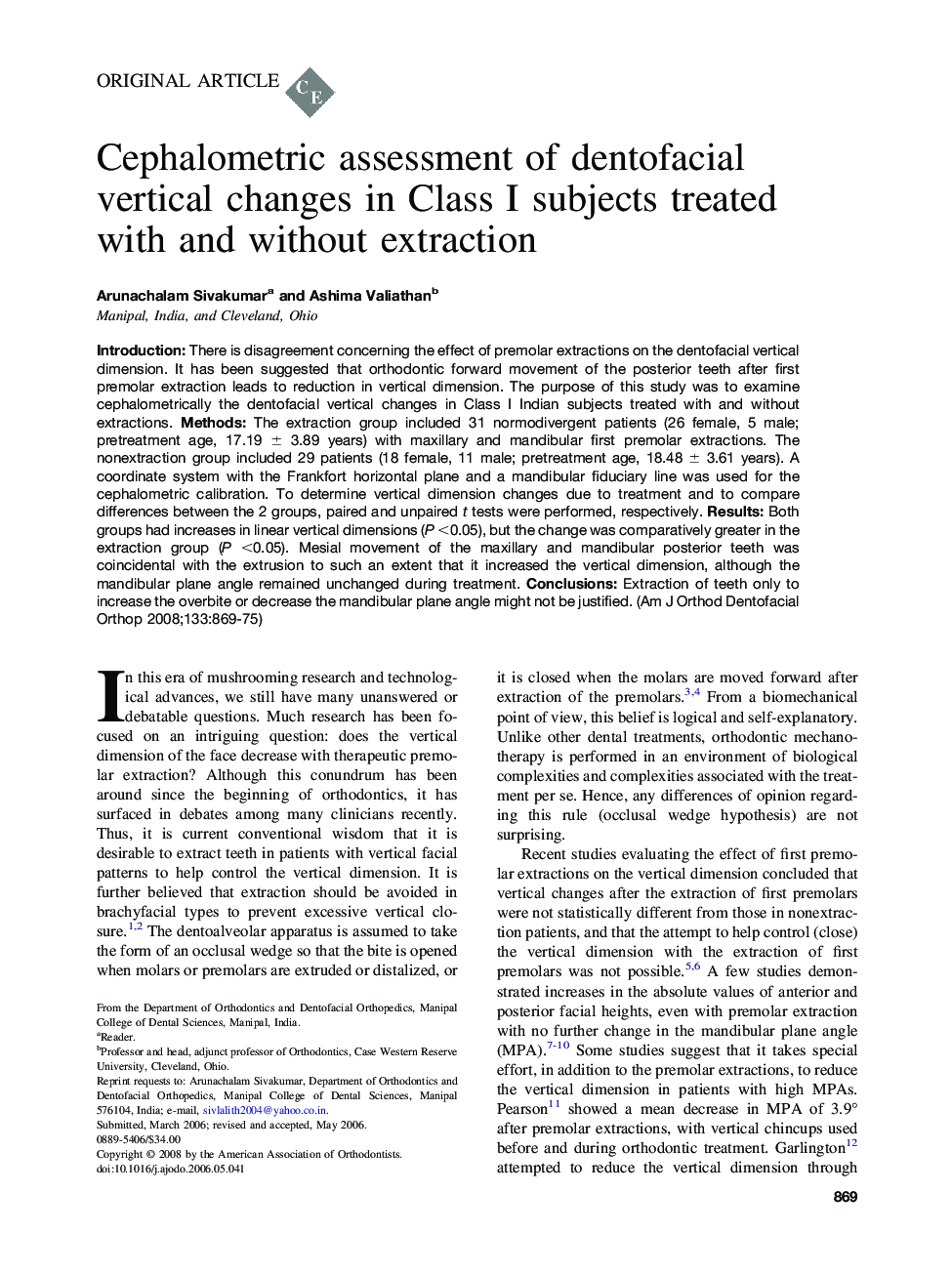| Article ID | Journal | Published Year | Pages | File Type |
|---|---|---|---|---|
| 3119097 | American Journal of Orthodontics and Dentofacial Orthopedics | 2008 | 7 Pages |
Introduction:There is disagreement concerning the effect of premolar extractions on the dentofacial vertical dimension. It has been suggested that orthodontic forward movement of the posterior teeth after first premolar extraction leads to reduction in vertical dimension. The purpose of this study was to examine cephalometrically the dentofacial vertical changes in Class I Indian subjects treated with and without extractions. Methods:The extraction group included 31 normodivergent patients (26 female, 5 male; pretreatment age, 17.19 ± 3.89 years) with maxillary and mandibular first premolar extractions. The nonextraction group included 29 patients (18 female, 11 male; pretreatment age, 18.48 ± 3.61 years). A coordinate system with the Frankfort horizontal plane and a mandibular fiduciary line was used for the cephalometric calibration. To determine vertical dimension changes due to treatment and to compare differences between the 2 groups, paired and unpaired t tests were performed, respectively. Results:Both groups had increases in linear vertical dimensions (P <0.05), but the change was comparatively greater in the extraction group (P <0.05). Mesial movement of the maxillary and mandibular posterior teeth was coincidental with the extrusion to such an extent that it increased the vertical dimension, although the mandibular plane angle remained unchanged during treatment. Conclusions:Extraction of teeth only to increase the overbite or decrease the mandibular plane angle might not be justified.
